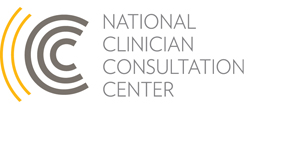Case of the Month: Initiating Hepatitis C Treatment in an HIV Co-Infected Patient
Case Summary
A clinical pharmacist called the CCC regarding a 49 year-old male diagnosed with HIV and hepatitis C (HCV) in 2006. He was started on co-formulated tenofovir DF (TDF)/emtricitabine/efavirenz shortly after diagnosis but then stopped taking it in 2013 after falling out of care. The patient presented in early 2015 to re-engage in care, and states that in addition to resuming antiretroviral therapy (ART) he’s heard about the newer HCV medications and would like to be treated. His new HIV-treating provider initiated co-formulated TDF/emtricitabine with ritonavir-boosted darunavir, and his viral load has decreased from 2,410 copies/mL to 25 copies/mL. Current CD4 cell count is 257 cells/mm3.
The HCV genotype is 1b, and current HCV viral load is 3,751,300 IU/mL. The patient has no abnormal findings on liver imaging, and FIB-4 score is 5.82 (APRI is 2.727). PT and INR are normal. The caller would like to know whether the care team should wait for complete HIV virologic suppression before initiating HCV treatment.
CCC Consultant Response
The CCC recommended initiating HCV treatment now for this HIV/HCV co-infected patient. All HIV-positive patients should be screened for HCV infection, and if co-infected should undergo HCV treatment to decrease their risk of liver disease progression. Compared to HCV mono-infected patients, those with HIV/HCV co-infection experience accelerated rates of hepatic fibrosis; HCV treatment can help mitigate this. In the past, HIV/HCV co-infected patients treated with interferon-based regimens had a lower chance of HCV cure than HCV mono-infected patients; however, with the new and better-tolerated HCV direct acting agents (DAAs), co-infected treatment-naïve patients do just as well as mono-infected patients, with cure rates of over 90%. Clinical trials for all currently approved DAAs included co-infected patients with higher CD4 counts and HIV virologic suppression, and there are good data to guide co-infection treatment decisions. Drug interactions between ART and HCV DAAs remain a key consideration in regimen selection.
It is also important to remember that without effective HIV treatment, HCV has a faster progression to hepatic fibrosis than if a patient were infected with HCV alone (this is especially true for those with CD4 < 200 cells/mm3). For most co-infected patients, including those with cirrhosis, the benefits of ART outweigh concerns regarding ART-induced hepatotoxicity, because successful ART can slow progression of liver disease. Therefore, ART should generally be started prior to HCV treatment. In co-infected, ART-naïve patients with CD4 > 500 cells/mm3, it may be acceptable to treat HCV first (i.e. defer ART until after HCV is treated). This strategy decreases pill burden, avoids overlapping toxicities between ART and anti-HCV medications, and also avoids drug-drug interactions.
A key goal for someone on ART will be to achieve/maintain an undetectable HIV viral load. Although low-level HIV viremia is not a contraindication to starting HCV treatment, the decision to treat a co-infected patient whose HIV viral load is not fully suppressed should be made in collaboration with the HCV-treating provider.
For this caller’s patient, the CCC advised treating his HCV with co-formulated ledipasvir/sofosbuvir for 12 weeks; however, concurrent use of a ritonavir-boosted protease inhibitor (such as darunavir) with TDF and ledipasvir/sofosbuvir may result in higher TDF levels leading to increased risk of TDF-associated nephrotoxicity. To avoid this, a change in the patient’s ART to a combination that is more compatible with ledipasvir/sofosbuvir can be considered, if alternate ART options are available. If an ART change cannot be made, close monitoring for TDF-related adverse effects is recommended.
If the decision is made to change the patient’s ART during HCV treatment, either changing the boosted protease inhibitor or changing the TDF is an option. New potential ART combinations for this patient include a dolutegravir-based regimen, with either TDF/emtricitabine or abacavir/lamivudine as the NRTI “backbone”( (note: abacavir should only be started after confirming the patient is HLA-B*5701 negative). Abacavir/lamivudine/dolutegravir is available as a co-formulated single tablet regimen. Another option is co-formulated abacavir/lamivudine with ritonavir-boosted darunavir. Once HCV treatment is completed, the caller has the option of changing the patient’s ART back to co-formulated TDF/emtricitabine with ritonavir-boosted darunavir or continuing the new ART regimen. For both HIV and HCV treatment, supporting medication adherence and engagement in care greatly improves treatment outcomes.
References
1. Panel on Antiretroviral Guidelines for Adults and Adolescents. Guidelines for the use of antiretroviral agents in HIV-1-infected adults and adolescents. Source: Department of Health and Human Services. Accessed January 25, 2016.
2. Recommendations for testing, managing, and treating Hepatitis C. Source: AASLD/IDSA/IAS-USA. Accessed January 25, 2016.
3. Rockstroh JK, Bhagani S. Managing HIV/hepatitis C co-infection in the era of direct acting antivirals. BMC Medicine. 2013;11:234.
4. Harvoni package insert. Source: Gilead Sciences. Accessed January 25, 2016/
Because CCC consultations are based on information provided by the caller or clinician accessing the online consultation center, without the benefit of a direct evaluation or examination of the patient, consultations are intended to be used as a guide. They do not constitute medical advice and are not to serve as a substitute for medical judgment. This Case of the Month includes consultation based on the most up-to-date evidence at the time of its publication. To learn about current recommendations, please call one of our clinical consultation lines.
 University of California, San Francisco |
University of California, San Francisco |
